PRR Veritas
frozen Green Peas
frozen green peas are a healthy and nutritious option.
frozen green peas
frozen green peas are a healthy and nutritious option, offering many of the same benefits as fresh peas while being readily available and convenient year-round.
Here’s why frozen green peas are a good choice:
Nutrient Retention:
Frozen peas are often picked at their peak ripeness and frozen quickly, helping to preserve their natural vitamins and minerals, including vitamin C, folate, and fiber.
Convenience and Year-Round Availability:
Frozen peas are a convenient option for year-round consumption, unlike fresh peas which are seasonal.
Rich in Nutrients:
Peas are a good source of plant-based protein, fiber, and essential minerals like potassium, magnesium, and calcium.
Versatile:
Frozen peas can be used in a variety of dishes, including soups, stir-fries, salads, and more.
Cost-Effective:
Frozen peas can be a more cost-effective option than fresh peas, especially during the off-season.
Digestibility:
Frozen peas are digestible
Longer shelf life:
Frozen peas can last 6–8 months if stored correctly, while fresh peas can only be stored for 3–4 days.
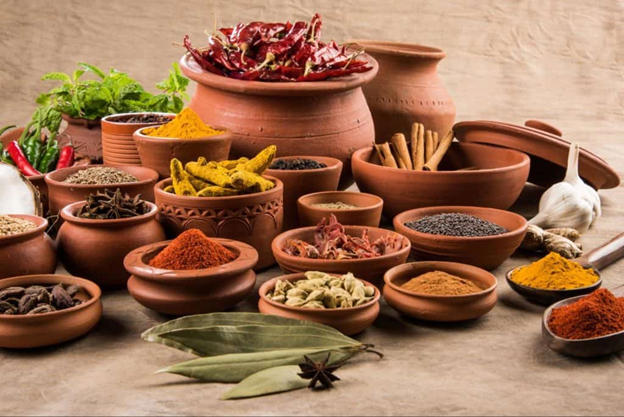
GARAM MASALA
Garam masala is the king of Indian spices, though, in truth, it was never really a fair fight. This “spice” is a delicious, hearty mix of some of the most popular spices in all of the Indian and Pakistani cuisine, including:
- Black peppercorns
- Black cardamom
- Green cardamom
- Nutmeg
- Cinnamon
- Cloves
- Cumin
- Coriander
“Garam” roughly translates to “heat.” These aromatic spices are believed to get the blood pumping in all those who pepper them into their favorite dish. Garam masala blends vary between regions and households, so no two garam masalas will taste quite the same.
CORIANDER POWDER (DRY DHANIA POWDER)
Coriander, or dry dhania powder, is perhaps the most popular single spice in any Indian spice rack. It is made from the same plant as cilantro— Coriandrum sativum.
While coriander refers to the leaves, seeds, or powder of the plant, cilantro relates only to dried leaves. If you’ve ever had cilantro, you know that coriander isn’t exactly spicy but sharp and refreshing. It’s one of the oldest spices globally and distinct for its signature golden-yellow hues and citrus-like aromas.
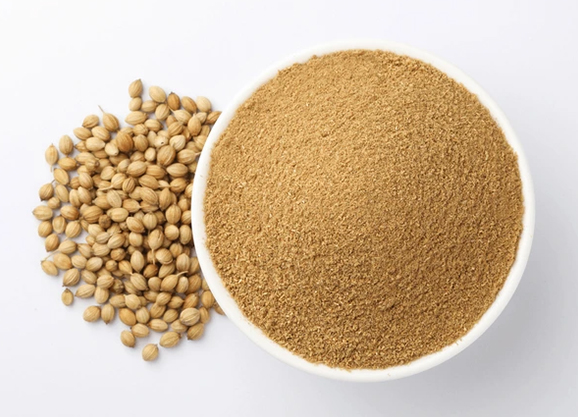
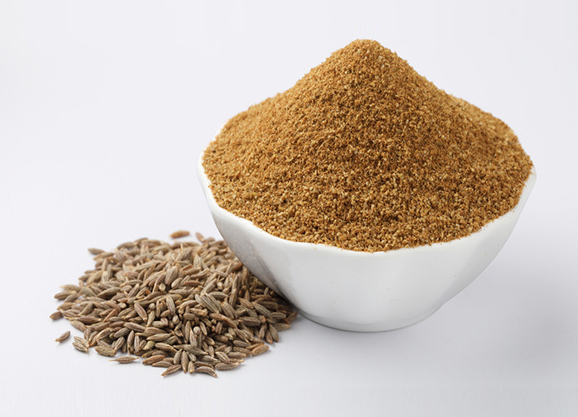
CUMIN OR JEERA SEEDS
Cumin is a popular spice originating from Asia, now predominantly produced in India and Iran. Its intense, smoky and earthy flavor makes it one of the most popular spices used in Indian cuisine, especially in dals and curries, but even in breads and savory beverages!
Roast the seeds for about 30 seconds to a minute, until you can smell its signature toasty aroma. Then, grind the seeds into a powder before quickly cooling and blending it into the rest of the dish.
MUSTARD SEEDS OR RAI
While cumin is one of the most popular tempering spices in North Indian cooking, that title goes to mustard seeds or rai in South Indian cuisine.
These crunchy seeds are known for their smoky, nutty flavor and are incredibly common in rice dishes and curries, including in our Chicken Coconut Curry with Mango. Many South Indian recipes say to simmer the seeds in hot oil and pop, releasing their flavor before adding in the other ingredients.
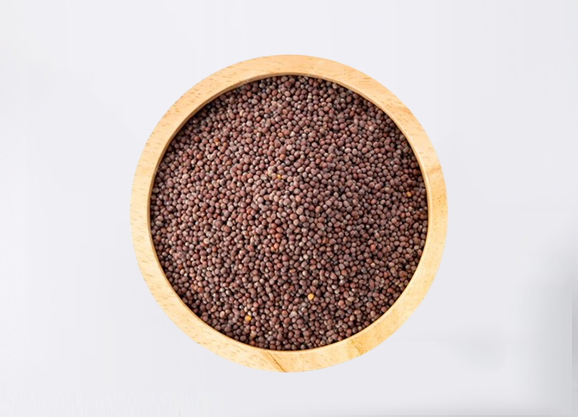
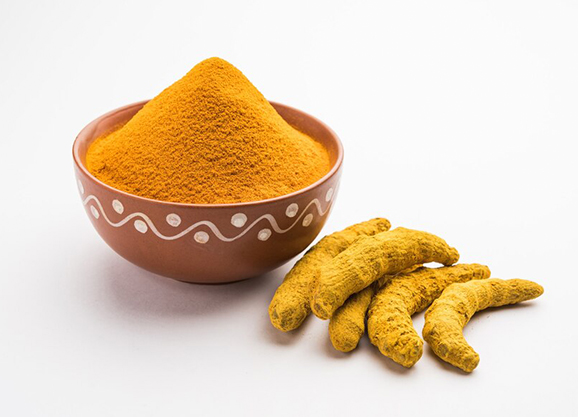
TURMERIC POWDER OR HALDI
Haldi, or turmeric powder, will stand out in your spice cabinet due to its signature yellow hues and earthy flavor profile.
It’s made from finely ground turmeric root and enriches many classic Indian dishes like Roasted Tomato Curry, Chicken Vindaloo, and Lemon Rice.
Outside of the kitchen, turmeric is known for its antioxidant and medicinal potential.It’s included in many natural supplements due to its anti-inflammatory properties. This spice is rapidly gaining popularity in the Western world with Turmeric lattés and the immunity-boosting Haldi Doodh.
CHILI POWDER OR LAL MIRCHI
Red chili powder isn’t simply chosen for its extra punch of heat; it also adds vibrant, peppery flavor and a distinct red hue to any dish.
There are many types of red chili powder, though the most common is made from the Kashmiri red chili. If you’d like more natural flavor, grind some red chili yourself from dried chili peppers.
Many people associate “spicy” with this red Mirchi, but it is only one component of Indian cooking. Indian cuisine’s signature heat and spiciness come from a combination of all the items mentioned on this list. It varies widely between regions and households depending on personal preference and heat tolerance.
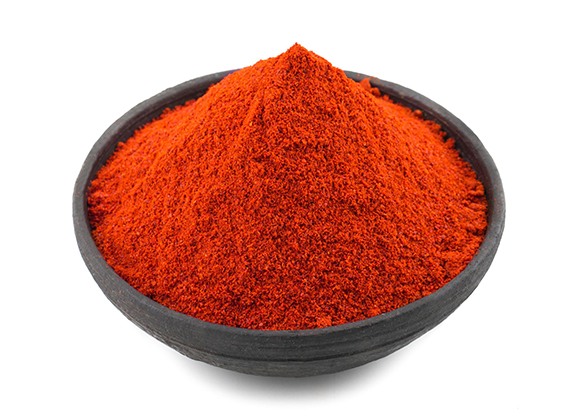
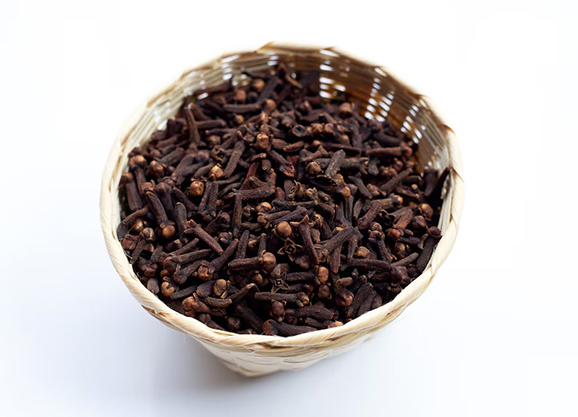
CLOVES OR LAUNG
Indian food is hardly the only world cuisine to feature cloves. They’re also highly prevalent in Middle Eastern, North African, and East Asian cuisine, commonly used to spice up curries, meat dishes, and even hot beverages, like chai.
Cloves are one of the main ingredients in garam masala and are known for their powerful anise notes.
GREEN CARDAMOM (ELAICHI)
Elaichi, or green cardamom, is the world’s third most expensive spice, only bested by vanilla and saffron. Not only is it featured heavily across Indian cuisine, but it’s also commonly used as a medicine.
The light and sweet flavor is perfect for desserts, chai, spice mixes, and even hot chocolate. It’s often blended whole in spice mixes like garam masala, though it can also be popped open and lightly crushed into sweets or desserts. We also use it in some curries, especially in North Indian cooking.
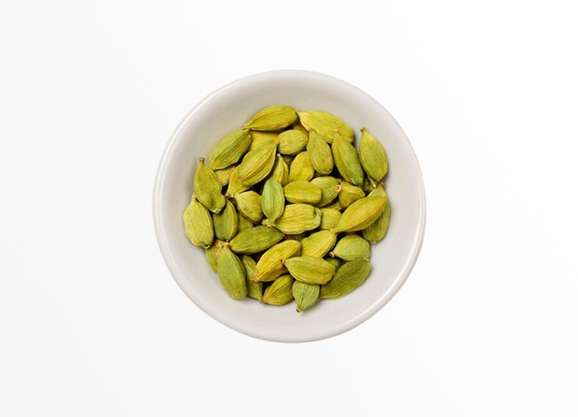
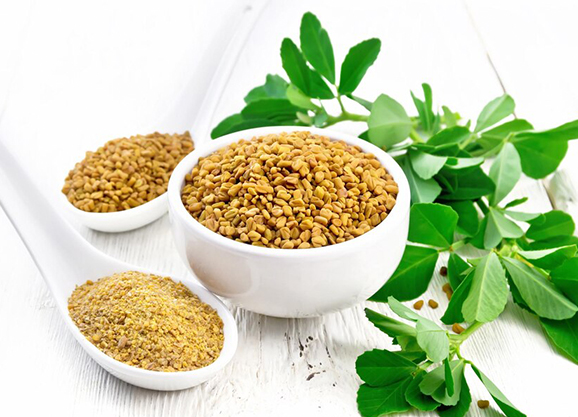
DRIED FENUGREEK LEAVES (KASOORI METHI)
Dried fenugreek leaves, or kasoori methi, add a slightly bitter, earthy layer to any dish, similar to a fusion between celery and fennel seeds. It’s similar to how western cuisines use dried thyme or oregano. In essence, a little bit goes a long way.
In most dishes, the leaves are crumbled over veggie or meat curries like Butter Chicken or Palak Paneer before serving to add an extra layer of earthy, musky fragrance. These herbs are also often added to the whole wheat dough to make a methi paratha or roti.
Fenugreek seeds are also common, and these resemble tiny wheat kernels but should be used in moderation, just like cloves.
FENNEL SEEDS
Elaichi, or green cardamom, is the world’s third most expensive spice, only bested by vanilla and saffron. Not only is it featured heavily across Indian cuisine, but it’s also commonly used as a medicine.
The light and sweet flavor is perfect for desserts, chai, spice mixes, and even hot chocolate. It’s often blended whole in spice mixes like garam masala, though it can also be popped open and lightly crushed into sweets or desserts. We also use it in some curries, especially in North Indian cooking.
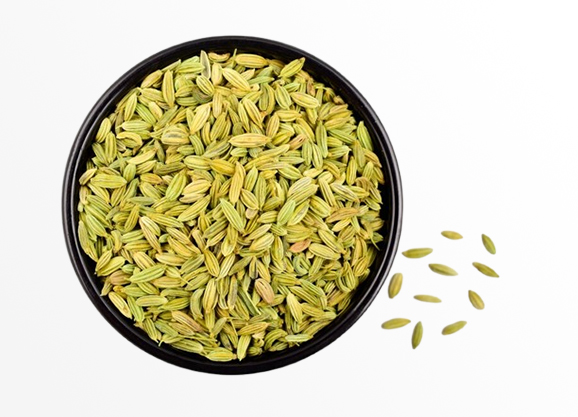
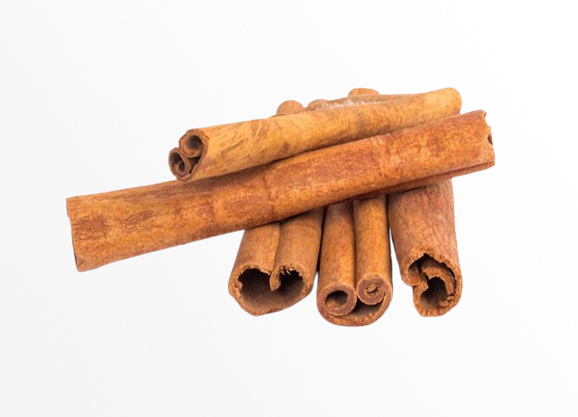
DRIED FENUGREEK LEAVES (KASOORI METHI)
This might be news to American readers, but the cinnamon you know and love isn’t cinnamon.
The vast majority of cinnamon sold in the United States is Cassia, which is harvested from the bark of evergreen trees. Cassia has a warmer, sweeter aroma than its cousin, Ceylon cinnamon (often referred to as “true cinnamon”).
If you add Ceylon cinnamon to a bowl of kheer (Indian rice pudding), you’ll find that it’s a lighter shade of brown and has a milder taste than Cassia cinnamon. Either variety will work in Indian cooking, though Ceylon is more prevalent in India and thus more likely to feature in truly authentic Indian cuisine.
In Indian cuisine, cinnamon is predominantly used for sweet foods – like the tasty drink chai. It’s also sauteéd in many savory dishes and used as a primary ingredient in garam masala, Chicken Tikka Masala, and Chicken Biryani.
CURRY LEAVES
Curry leaves are Indian leaves with a complex citrus flavor. They are typically used at the beginning of the cooking process, or as the final accent.
Curry leaves mix with mustard seeds and coconut oil for a strong blast of flavor. Like many other spices, curry leaves have a more robust aroma than the actual taste.
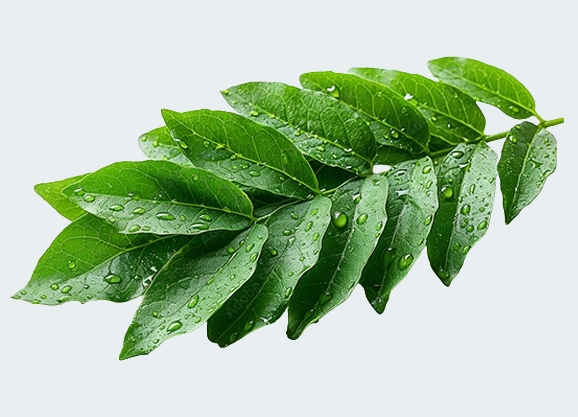
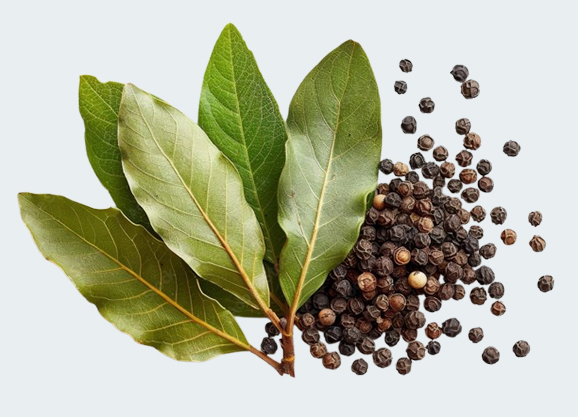
BLACK PEPPER
Black pepper or peppercorn is a stranger to no one. It is one of the very few spices that add the most flavor to various spices.
Black, white, green, or red, all kinds of peppercorns grow on vines in clusters. Most peppercorn crops are produced in Asia—mainly in India and Vietnam. Black pepper is the most common kind used in India.
Use crushed or whole in many recipes like pepper chicken or cracked pepper rice; black pepper is also added to garam masala and madras curry spice blend.
HING (ASAFETIDA)
A +654
7safetida is an integral spice throughout Indian cuisine, present in various meals. You may have seen it under several names, including hing, devil’s dung, and stinking gum. This spice carries a strong odor, similar to onions and garlic, making it instantly recognizable.
A little goes a long way. We recommend you start by using the spice lightly– if you crave more of the flavor, it’s easy to incorporate more. You can try integrating asafetida in lentil stews, curries, and bread and rice dishes.
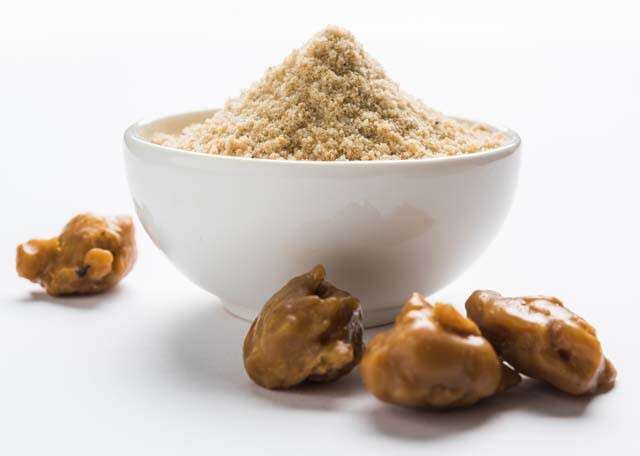
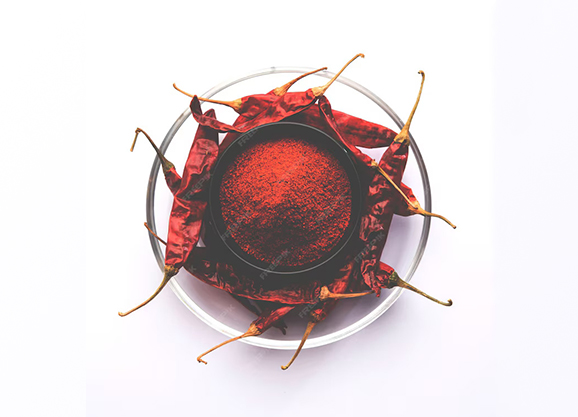
CAYENNE (RED CHILLI)
The Portuguese came to India in 1510. They made Goa their trading colony, and that’s when chili came to India from South America. And now India is one of the biggest, if not the biggest, exporters of chilis globally. Most of the Indian chilis are left to ripen; that’s when they turn red and then plucked and dried to make a powder.
Cayenne is one of the few chilis grown in India that is also consumed when it is green and fresh. Also one of the few varieties of chilis in India that is broadly used in its dried powdered form. Although it is not the hottest chili, cayenne sure packs a punch. And the heat in most Indian curries is because of cayenne pepper.
PRR Veritas [Global Exports]
To reach remote places efficiently and sustain product delivery on regular basis.

